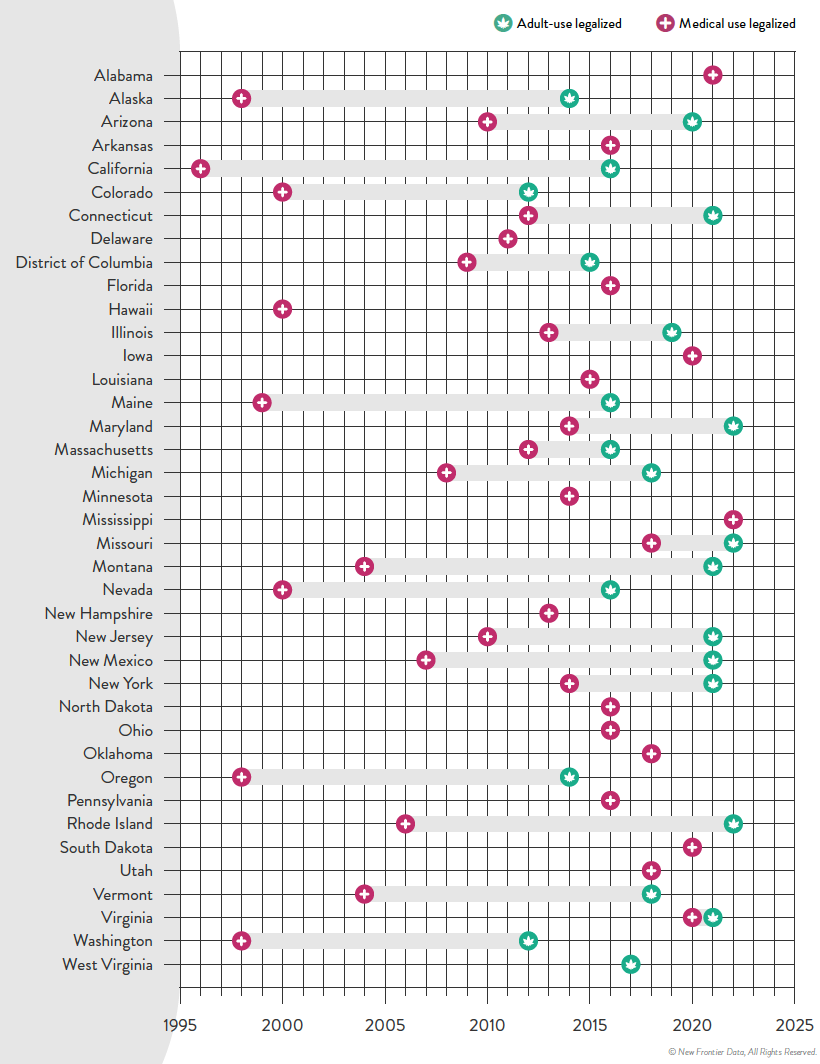The Basic Principles Of Marijuana Legalization News & Stories
Department of Health and Human Solutions, 41. 9% (more than 2 in 5) of all Americans 12 or older have used marijuana eventually in their lives, while 11. 5% (about 1 in 9) reported utilizing it „this year.” According to a 2022 Gallup study, 16% of Americans reported being marijuana cigarette smokers (up from 7% in 2013) and 48% reported trying marijuana at some point in their lifetimes (up from 4% in 1969).
According to the National Institute on Substance Abuse, „The term medical cannabis describes using the entire unprocessed marijuana plant or its standard extracts to deal with a disease or sign.” The U.S Food and Drug Administration (FDA) has not formally authorized marijuana as a medicine. Given that the Controlled Substances Act of 1970 categorized marijuana as a Arrange I drug, up until the passage of the 2018 United States farm bill, under federal law it was unlawful to possess, use, buy, offer, or cultivate marijuana in all U.S.
As an Arrange I compound, the highest constraint of five various schedules of illegal drugs, it is claimed cannabis has a high capacity for abuse and has no appropriate medical use. In spite of this federal restriction, some state and regional federal governments developed laws trying to decriminalize marijuana, which has decreased the number of „easy belongings” transgressors sent to jail, given that federal police seldom targets people straight for such fairly small offenses.

Nevertheless, under the Supremacy Provision of the U.S. Constitution, federal law preempts conflicting state and local laws. The lack of a state law does not provide a preemption conflict with a federal law. The federal government criminalized marijuana under the Interstate Commerce Clause, and the application of these laws to intrastate commerce were resolved squarely by the U.S.
The Ultimate Guide To Political Issue: Marijuana – Harvard Iop

1, in 2005. In January 2009, President Barack Obama’s shift team organized a poll to clarify a few of the top issues the American public wishes to have his administration look into, and two of the top ten ideas were to legalize making use of cannabis. In July 2009, Gil Kerlikowske, Director of the Office of National Drug Control Policy, clarified the federal government’s position when he stated that „marijuana threatens and has no medical benefit” and that „legalization is not in the president’s vocabulary, and it’s not in mine.” A January https://wayofleaf.com/blog/best-online-cannabis-education-schools 2010 settlement between the U.S.
Following the 2012 presidential election, the Office of National Drug Control Policy under the Obama administration mentioned that it „steadfastly opposes legalization of cannabis and other drugs because legalization would increase the accessibility and use of illicit drugs, and pose considerable health and safety risks”. In February 2014, the administration released guidelines to banks for performing deals with legal cannabis sellers so these new services can store cost savings, make payroll, and pay taxes like any other business.
On August 29, 2013, the Justice Department embraced a new policy (called the Cole memo) concerning the enforcement of federal law in states that have actually legislated non-medical cannabis. The policy specified that commercial distribution of marijuana would be normally tolerated, except in particular scenarios, such as if violence or firearms are included, the profits go to gangs and cartels, or if the marijuana is distributed to states where it is illegal.

